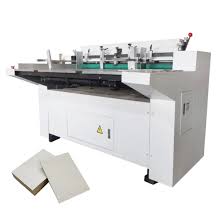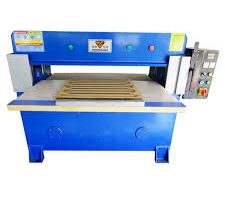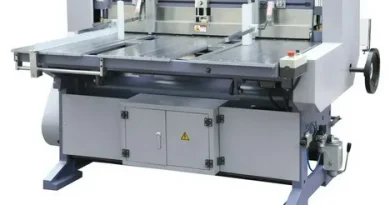Leveraging Technology for Efficiency: The Evolution of Cardboard Slitting Machines
In the quest for operational efficiency and sustainability within the packaging industry, the evolution of cardboard slitting machines stands as a testament to technological progress. These machines, central to the conversion of bulk cardboard into precise sizes for packaging, have undergone significant transformations to meet the increasing demands of modern manufacturing. This article examines the technological advancements in cardboard slitting machines and their impact on the packaging industry.
Historical Context and Initial Innovations: The journey of cardboard slitting machines began with manual operations that were labor-intensive and lacked precision. The inception of mechanized slitting machines introduced a new era, significantly enhancing production speed and consistency. These early innovations laid the groundwork for further advancements.
Adaptation to Digital Technology: The integration of digital technology marked a pivotal shift in the capabilities of cardboard slitting machines. Computerized controls and programming brought unprecedented precision and flexibility, allowing for quick adjustments and minimal downtime between production runs. This adaptation has enabled manufacturers to cater to diverse packaging needs with greater accuracy and efficiency.
Energy Efficiency and Sustainability: Recent iterations of cardboard slitting machines focus on energy efficiency, reducing the carbon footprint of packaging operations. Innovations such as regenerative drive systems, which recycle energy back into the machine, and the use of energy-efficient motors, underscore the industry’s commitment to environmental sustainability. These advancements not only lower operating costs but also align with global efforts to mitigate climate change.
Enhanced Safety Features: As technology has advanced, so too have the safety mechanisms within cardboard slitting machines. Modern machines are equipped with sophisticated sensors and guards to prevent accidents, ensuring a safer workplace. These improvements reflect the industry’s prioritization of operator safety alongside productivity and efficiency.
Future Trends and Innovations: Looking ahead, the future of cardboard slitting machines is poised for further innovation. Anticipated developments include the integration of artificial intelligence and machine learning for predictive maintenance and optimized performance, as well as increased automation for even higher precision and efficiency. Such advancements promise to redefine the standards of packaging production, making it faster, safer, and more environmentally friendly.
In conclusion, the evolution of cardboard slitting machines exemplifies the dynamic interplay between technology and industrial efficiency. From manual cutting to highly sophisticated, automated systems, these machines have continually adapted to meet the changing needs of the packaging industry. As we move forward, the ongoing innovation in cardboard slitting technology will undoubtedly continue to drive improvements in productivity, safety, and sustainability, further cementing its role as a cornerstone of modern manufacturing processes.


